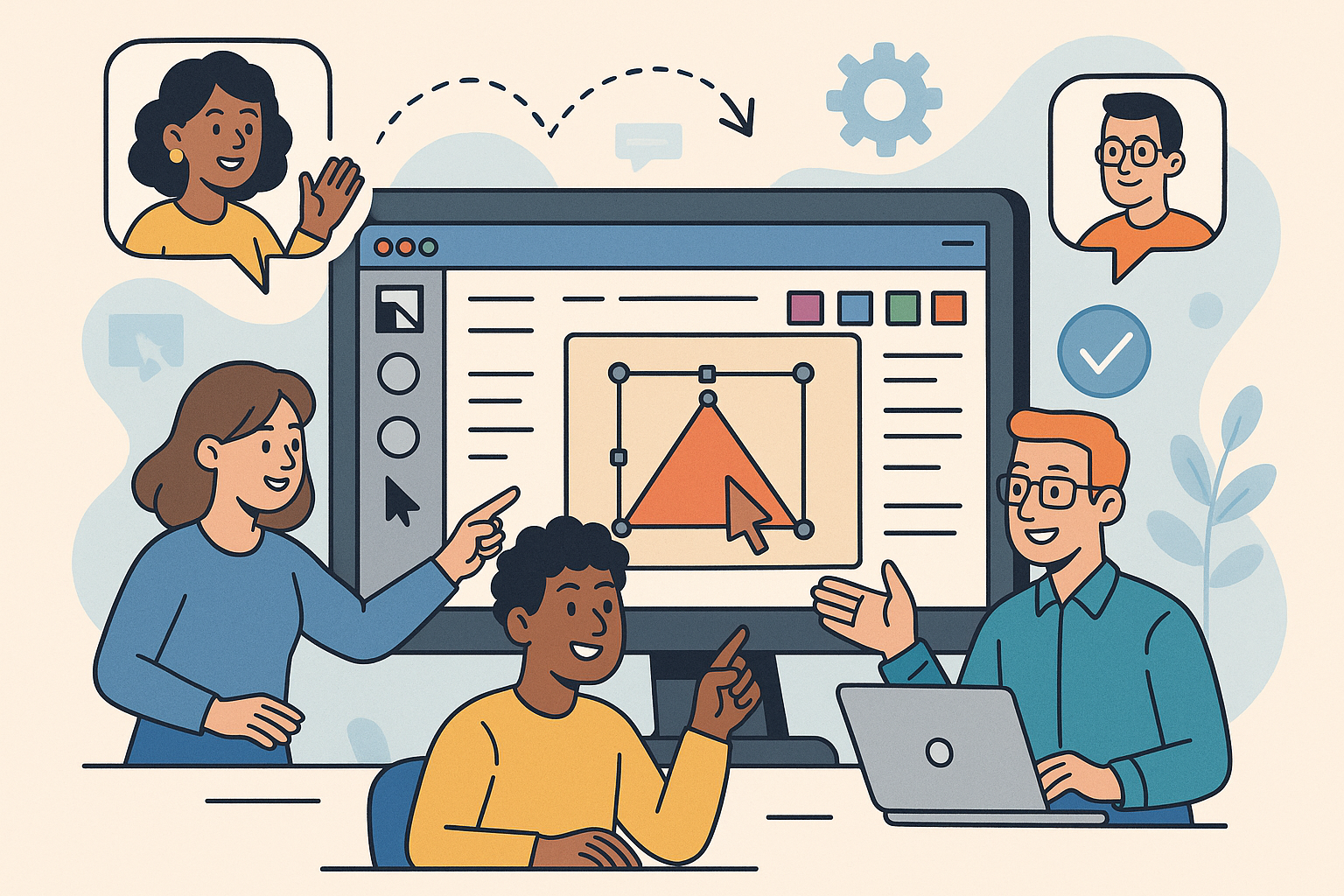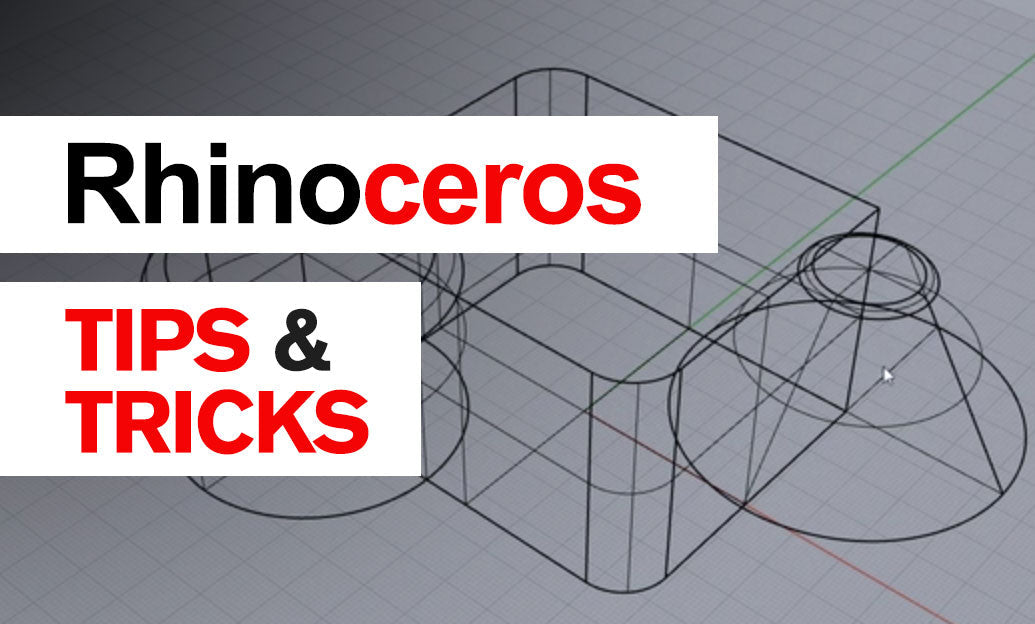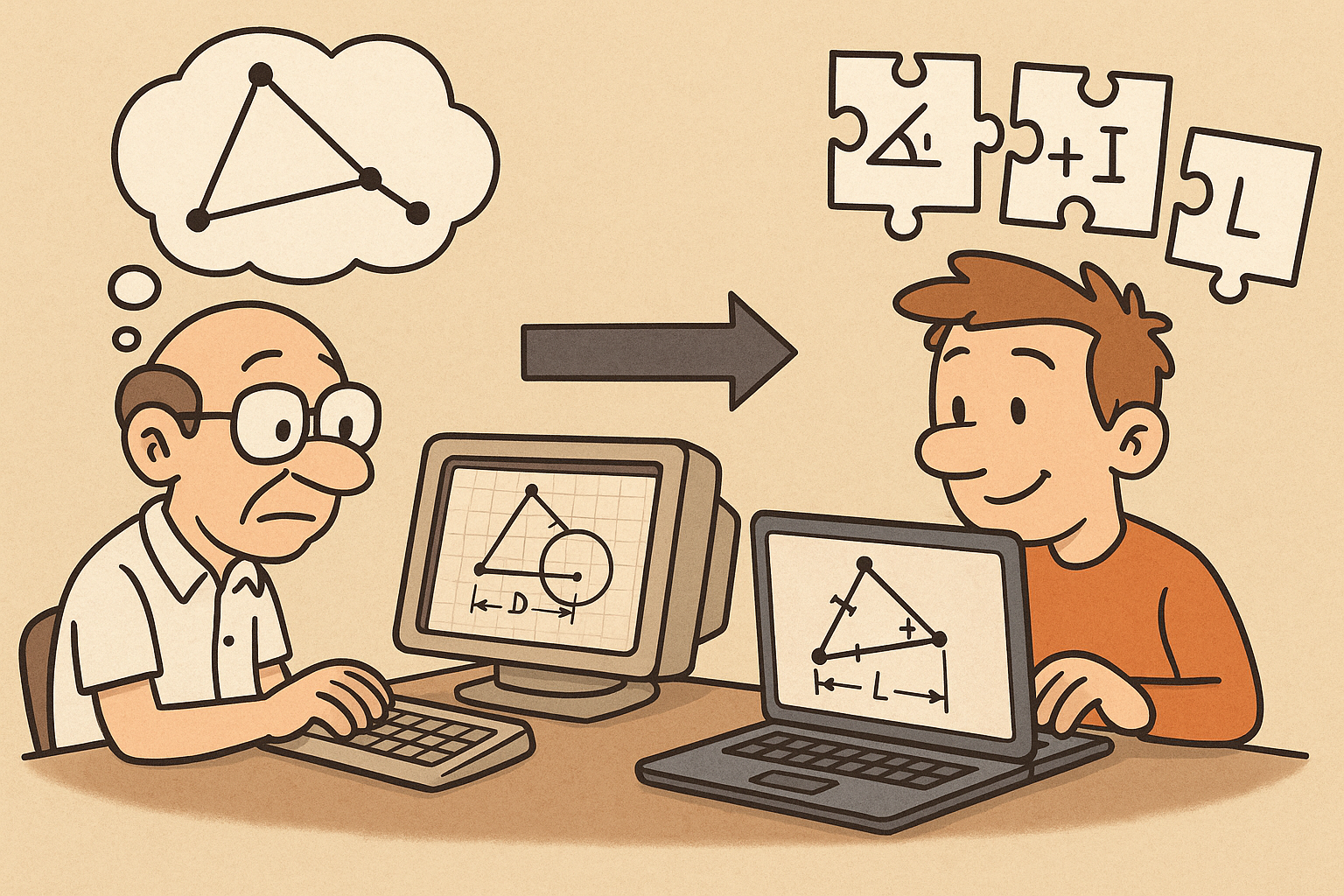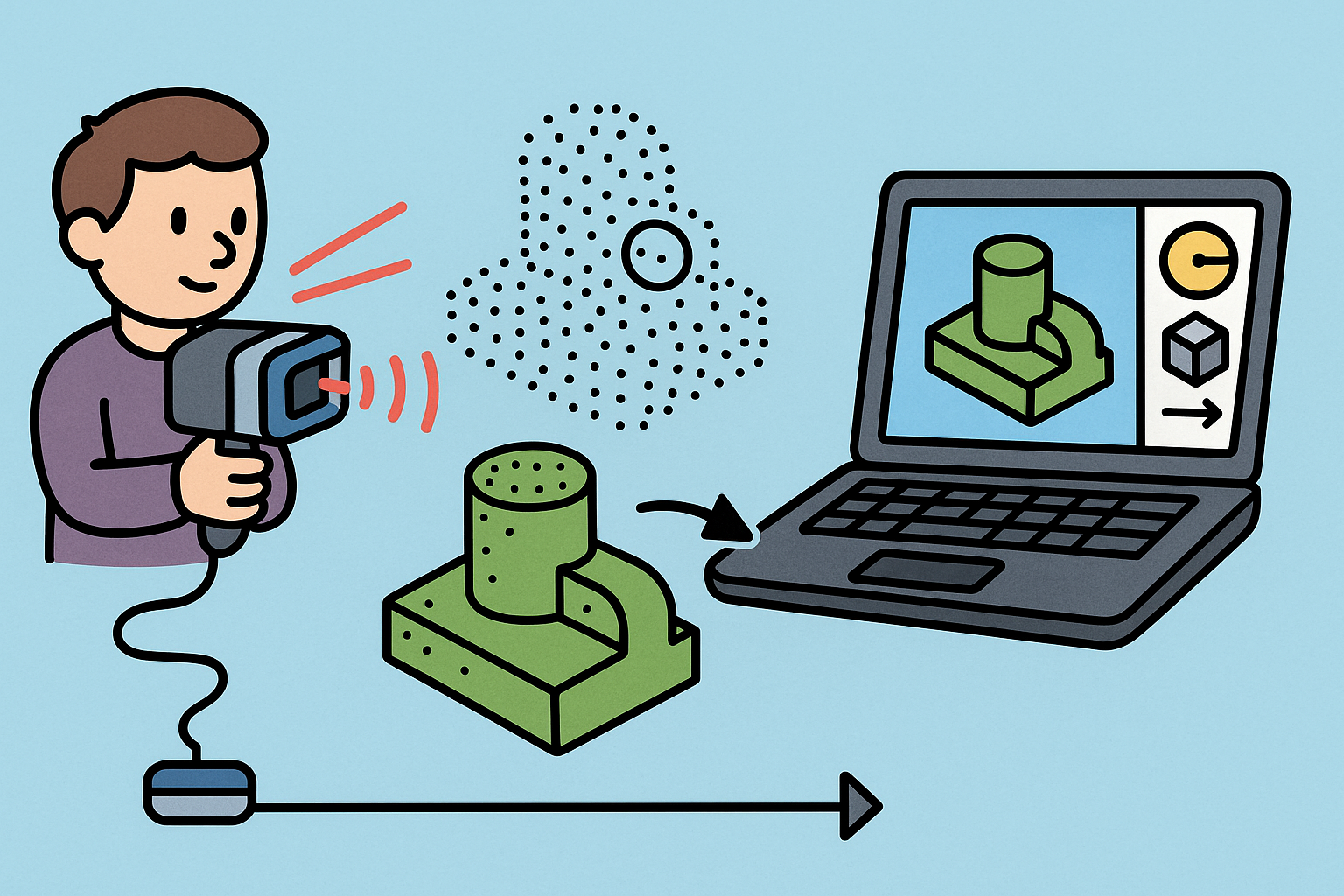Your Cart is Empty
Customer Testimonials
-
"Great customer service. The folks at Novedge were super helpful in navigating a somewhat complicated order including software upgrades and serial numbers in various stages of inactivity. They were friendly and helpful throughout the process.."
Ruben Ruckmark
"Quick & very helpful. We have been using Novedge for years and are very happy with their quick service when we need to make a purchase and excellent support resolving any issues."
Will Woodson
"Scott is the best. He reminds me about subscriptions dates, guides me in the correct direction for updates. He always responds promptly to me. He is literally the reason I continue to work with Novedge and will do so in the future."
Edward Mchugh
"Calvin Lok is “the man”. After my purchase of Sketchup 2021, he called me and provided step-by-step instructions to ease me through difficulties I was having with the setup of my new software."
Mike Borzage
Understanding the Impact of Collaborative Design Platforms on Modern Workflows
June 18, 2025 9 min read


Understanding Collaborative Design Platforms
Collaborative design platforms have emerged as a cornerstone of modern design workflows, revolutionizing the way design professionals work together across geographies and disciplines. In this highly connected era, design teams are moving away from isolated, traditional design tools toward fully integrated cloud-based ecosystems. These platforms merge the functionalities of design software with communication and project management systems, thereby streamlining collaboration and decision-making processes. The evolution is rooted in a significant shift from stand-alone applications that were limited to individual use toward comprehensive, interactive environments that incorporate features such as **real-time updates**, multi-user involvement, and centralized file management. As teams embrace such platforms, the need for traditional version controls is mitigated by in-built versioning systems that allow every member to track changes and contribute insights without duplicating efforts. This transformation not only increases workflow efficiency but also encourages deeper levels of creative interaction among participants. In addition, the incorporation of advanced analytical tools and intelligent data visualizations further enhances the workflow by providing insights into design evolution, critical design elements, and project bottlenecks. Such sophistication in integrated software solutions ensures that every design iteration is improved through collective intelligence and iterative review.
Evolution of Traditional Tools to Cloud-Based Solutions
The shift toward collaborative design platforms is marked by revolutionary changes in tool architecture and user experience. Historically, designers relied on local computing power and individually maintained files, methods that often resulted in duplicated efforts, slowed revision cycles, and miscommunication among team members. The migration to cloud-based systems has paved a smoother path for multidisciplinary collaboration. Some of the essential features that these platforms now offer include:- Multi-user involvement: Allowing several stakeholders to work concurrently on the same project.
- Real-time updates: Ensuring that every team member sees the latest project changes and decisions immediately.
- Centralized file management: Providing a single, secure repository for all project documents, revisions, and resources.
- Integration with communication tools: Melding chat, video conferencing, and project management seamlessly within the design workspace.
Integration with Communication and Project Management Tools
Integrated design software has increasingly included communication and project management functionalities that are essential for fostering a proactive collaborative environment. With tools like shared calendars, live chat, and task tracking dashboards built directly into the platform, teams experience a smooth handoff of information, which prevents delays and misinterpretations during crucial project phases. The robust integration between design and organization tools is enabling the rapid exchange of ideas, structured feedback, and progress updates that strengthen team dynamics. Additionally, the automatic synchronization of data across various apps eliminates the need for redundant data entry, ensuring that everyone is always on the same page. To summarize, collaborative design platforms have advanced far beyond the original capabilities of traditional design software, offering a suite of features so diverse yet seamlessly interconnected that they now represent an indispensable element of modern design workflows.Enhancing Team Productivity and Workflow Efficiency
The transformation triggered by collaborative design platforms has created significant improvements in team productivity and workflow efficiency. These sophisticated systems streamline the project lifecycle by centralizing all documentation, version controls, and communication into one platform. Real-time collaboration tools shorten feedback loops by allowing instantaneous sharing and review of design changes. This minimizes miscommunication and redundancies during project execution. Enhanced collaboration tools, which include integrated file management systems and automated change tracking, help teams maintain a single source of truth that everyone relies on. Consequently, projects are completed with greater accuracy and speed, as the possibility of conflicting design iterations is drastically reduced. These systems also provide multilayered permission settings, ensuring that sensitive design documents are only accessible to authorized users, which, in turn, bolsters security and intellectual property protection. The efficiency gains realized through these platforms make it possible for teams to focus more on innovation and less on administrative tasks.
Real-Time Collaboration and Streamlined Handoffs
In the realm of design, every moment of creative inspiration counts, and seamless handoffs can be the difference between breakthrough innovation and delayed project timelines. With collaborative design platforms, handoffs and version control are managed with precision. The incorporation of **real-time collaboration** features means that multiple team members can simultaneously interact with ongoing projects. This dynamic engagement simplifies the handover process between departments, ensuring that design evolutions are consistently tracked and implemented. The following bullet points encapsulate key elements of these workflows:- Centralized file management: Where all project files are stored and versioned in a single location.
- Automated documentation: That captures changes, discussions, and decisions in real time.
- Integrated notifications: That ensure every contributor is aware of project updates and milestones.
Centralized Management and Remote Team Benefits
As organizations increasingly embrace remote and distributed work environments, the benefits of a centralized collaborative system have become ever more apparent. Remote teams often face the challenge of coordinating across different time zones, cultures, and communication styles. However, the advent of collaborative design platforms has mitigated these issues by providing consistent tools accessible from any location with an internet connection. In this setup, asynchronous communication takes on new importance. Teams are able to read through creative suggestions, analyze project updates, and contribute thoroughly to revisions at their own pace. Moreover, an integrated digital space where all members have unvarnished access to the most current project data has revolutionized project delivery. It reduces the need for repetitive meetings and allows teams to track progress continuously with automated tools that check for miscommunications or redundant work. With these mechanisms in place, collaboration is not confined by geographical boundaries but is instead propelled by a shared vision for efficiency and excellence.Fueling Creativity through Collaborative Innovation
The surge in collaborative design platforms has not only streamlined workflows but has also invigorated the creative process itself. By offering shared workspaces and enhanced communication capabilities, these platforms foster a culture of continuous innovation and creative brainstorming. The dynamic nature of a cloud-based design ecosystem means that every participant's ideas can be integrated into the workflow in near real time. This setup inspires design teams to break down siloed processes and to view each project through a lens of collective problem solving. Techniques such as integrated feedback loops and iterative design tracking enable every team member to contribute constructively along the design journey. As collaborative tools evolve, they now include AI-assisted features that provide intelligent design suggestions based on data-driven insights, which further enrich the creative process. Besides minimizing the latency typically associated with remote brainstorming sessions, the synergy of multi-user contributions ensures that creative blocks are overcome swiftly and that new, innovative design directions are quickly validated by peer input.
Enhanced Brainstorming and Iterative Feedback Loops
In a collaborative setting, creative brainstorming is never confined to a single session or a restricted set of ideas. With cloud-based platforms in the spotlight, designers can host real-time discussions that span across time zones, generating an environment where fresh ideas are constantly recycled and refined. This environment is boosted by intelligent design algorithms that offer **creative suggestions**, analyze trends, and even predict design challenges before they arise. The design process has transformed from a linear progression into a dynamic, iterative cycle that consistently builds on collective intelligence. Key features that facilitate this transformation include:- Shared workspaces: Digital canvases where multiple team members can sketch, annotate, and provide design input simultaneously.
- Integrated feedback channels: Where iterative notes and suggestions are recorded alongside design revisions.
- AI-driven insights: That identify potential improvements, highlight repetitive mistakes, and offer alternative design approaches based on historical data.
Role of Advanced Technologies in Creative Support
A notable advancement within collaborative design environments is the seamless integration of artificial intelligence and data analytics. These systems augment a designer’s capability by offering detailed, contextual suggestions that accelerate the creative process. For instance, when confronted with a challenging project brief, AI algorithms may propose design motifs, color palettes, or spatial configurations that have historically resonated well with similar projects. In addition, smart predictive tools scan ongoing designs to detect areas that may benefit from rework or inventive augmentation. This symbiotic relationship between human creativity and digital intelligence is a major enabler for breakthrough design solutions. The combination not only speeds up the ideation process but also serves as a catalyst for novel solutions that might not otherwise emerge in a conventional creative setting. Moreover, the ability to draw on a vast repository of historical data and design precedents ensures that every creative investment is contextualized with the learnings from past projects, thereby fueling a recursively improved design evolution.Future Trends, Challenges, and Conclusion
As the domain of collaborative design platforms evolves, several emerging trends and potential challenges demand careful attention from industry professionals. The digital landscape continues to evolve rapidly, and with it, the complexity of design software ecosystems. On one hand, these platforms are poised to incorporate increasingly immersive collaboration experiences, such as augmented reality (AR) and virtual reality (VR) workspaces, which enable teams to interact with three-dimensional models in a truly interactive manner. Additionally, the integration of advanced API frameworks could further streamline the synchronization between design, management, and other enterprise systems, deepening the impact of **cloud-based** environments on innovative product and architectural design. On the other hand, challenges surrounding data security, intellectual property protection, and compatibility across different software stacks are persistent issues that require robust and proactive solutions. These hurdles highlight the need for further investment in modern cybersecurity frameworks and adaptive regulatory standards that address the complexities introduced by distributed, multi-user design environments.
Emerging Trends in Collaboration and Immersive Environments
The future of collaborative design platforms is closely linked to a series of breakthrough advancements that aren’t just incremental improvements, but transformational shifts in how design is conceptualized and executed. In the coming years, augmented collaboration environments featuring immersive VR workspaces will allow team members to experience design prototypes in lifelike conditions. Such environments will enable designers, engineers, and architects to work together in a simulated space, which closely mirrors real-life interactions and enables more intuitive design decision-making. Alongside these immersive experiences, advanced API integrations will further link design platforms with enterprise resource planning and customer relationship management tools, leading to a highly interconnected ecosystem where strategic design decisions can be made based on robust data analysis. Moreover, the introduction of machine learning driven features will offer real-time intelligent assistance that preemptively identifies potential limitations and suggests contextually appropriate modifications. These trends collectively point towards a future where creativity is seamlessly enhanced by a well-integrated suite of digital tools, reshaping industry standards across diverse design disciplines.Addressing Challenges and Drawing Conclusive Recommendations
Despite the promising horizon, the rapid evolution of collaborative design platforms also presents several challenges that require systematic addressing. First, as design tools become increasingly accessible over the cloud, ensuring data security remains paramount. Concerns about unauthorized access, data breaches, and the safe management of intellectual property have catalyzed the need for more secure cloud-based solutions that integrate robust encryption protocols and real-time threat monitoring. Second, the proliferation of disparate software and toolsets demands a standardized approach to interoperability. Developers and industry experts must collaborate to create common frameworks that allow seamless data exchange and integration among different systems. Finally, as new immersive technologies such as AR and VR gain traction, there is a clear need for scalable training programs and best practices to help design professionals make the most of these advancements. In concluding, the current trajectory in the development of collaborative platforms is set to revolutionize the roles of creativity, efficiency, and innovation in modern design workflows. It is recommended that design teams undertake pilot projects to integrate these platforms into their existing processes, rigorously evaluate their performance, and iteratively expand their use as the technology matures. Key steps in the adoption process include:- Implementing robust security measures: To safeguard sensitive project data.
- Establishing standardized protocols: For data exchange and version control across systems.
- Investing in training and development: So teams are equipped to use innovative, immersive tools.
- Engaging in continuous review: To assess platform performance and optimize workflows.
Also in Design News

Rhino 3D Tip: Rhino Material Optimization: Nesting, Lightweighting, and Cut-Length Reduction
December 31, 2025 2 min read
Read More
Design Software History: Constraint Solving in CAD: From Sketchpad to Modern Parametric Engines
December 31, 2025 12 min read
Read More
Intent-Aware Scan-to-BRep: Integrating LiDAR Point Clouds into Solid Modeling Pipelines
December 31, 2025 12 min read
Read MoreSubscribe
Sign up to get the latest on sales, new releases and more …


